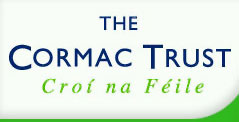London 2012: Preventing sudden cardiac death on the world’s biggest athletic stage .
London 2012: Preventing sudden cardiac death on the world’s biggest athletic stage
July 23, 2012 Lisa Nainggolan and Michael O’Riordan
London, UK – When 32-year-old Claire Squires collapsed in sudden cardiac arrest during the London Marathon in May, Dr Sanjay Sharma (St George’s Hospital, London, UK), medical director for the race, tried in vain to save her. Now Sharma, head of the cardiology team for the 2012 Olympics, will no doubt have Squires at the back of his mind when the Games open later this week. He and his team are doing everything possible to make sure a major cardiac event doesn’t grab the spotlight on sports’ biggest international stage.
Like Squires, at least four elite athletes have been felled by sudden cardiac death in recent months, including soccer star Fabrice Muamba, who arrested but miraculously survived. The media attention these events have garnered has inflamed the controversy over whether better preparticipation screening would have prevented any of the deaths or whether the time has come for nations and health organizations to agree on a universal approach. And although cardiac events at past Olympic Games have been rare, they’re not unheard of.
Sharma is taking no risks.
He and his team have screened the entire UK Olympic squad for possible underlying cardiac conditions that could predispose to sudden death.
“We had to screen 32 different squads from various sporting disciplines ranging from athletics to rowing, many of which contained individuals not necessarily going to make the final team,” Sharma told heartwire. “The aim was to identify conditions that could potentially cause sudden cardiac death in an individual.”
In all, the team led by Sharma, who heads the only sports cardiology clinic in the UK, screened around 1000 potential Olympians and identified two athletes with Wolff-Parkinson-White syndrome. Those athletes, said Sharma, were told they would have to have a catheter ablation if they wanted to compete in the games. He doesn’t know if they ended up making the final squad.
Dr Sanjay Sharma, head of the cardiology team, 2012 Olympics
The International Olympic Committee (IOC) has recommended—but not mandated—that all countries screen their athletes to minimize the risk of sudden death. According to the IOC, if the 12-lead ECG raises suspicion of an underlying serious problem in an athlete, further tests should be performed. In many screening programs, the workup also includes an echocardiogram.
By contrast, the American Heart Association (AHA) and American College of Cardiology (ACC) do not recommend the use of ECGs for cardiovascular screening of athletes at any level. The Canadian Heart and Stroke Foundation also has no screening recommendations for athletes, nor does the Canadian Academy of Sport and Exercise Medicine, although they are in the process of developing a position paper on best practices for athlete screening and care.
At the far end of the spectrum is the Italian model, in which individuals are not allowed to participate in minor sports unless they have had a family history taken, physical examination, and 12-lead ECG. In the US and Canada, the cardiology and sports medicine community have not embraced mandatory ECG screening because of concerns about costs, access, and risk of false positives that leave some healthy kids on the sidelines. Instead, North American doctors typically rely on information from family history and physical exam to guide decisions.
We spend millions and millions on octogenarians to get back two or three years, and nothing on youngsters to get back 70 years of life. Speaking with heartwire, Dr Robert McCormack (University of British Columbia, Vancouver), medical director for the Canadian Olympic team traveling to London, said the addition of the 12-lead ECG makes sense, especially because it is the standard of care for professional athletes in soccer leagues in Europe and North America, the National Hockey League, National Football League, National Basketball Association, and Major League Baseball, among others.
“Nothing has been decided yet, but I think there is a feeling that we need to develop some guidelines for better cardiac screening than simply taking a family history along with a physical exam,” said McCormack. “It’s too imprecise. It would miss a vast majority of individuals at risk for sudden cardiac death.”
Dr Robert McCormack, medical director, Canadian Olympic team, 2012
McCormack explains that the Italian approach has failed to catch on in some countries in part because not all sporting authorities have accepted Italian estimates for sudden cardiac death—at approximately one in 50 000 athletes. Recent studies, however, including analyses performed in National Collegiate Athletic Association athletes, corroborate the Italian numbers. And, he notes, in certain populations, the risk is higher still. In male Division I basketball—a sport largely played by African Americans—the incidence of sudden death is significantly higher than one in 50 000, said McCormack.
“The point is, at least in sports medicine, there are certain groups that are at higher risk,” he said. “Elite athletes in certain sports, such as basketball, swimming, soccer, football, and cross-country skiing, tend to be at increased risk.”
Sharma notes that, although sudden cardiac death is rare, the prevalence of conditions causing sudden death is not. “Our own experience of screening high-level athletes is that about one in 100 has a condition that is congenital and could potentially cause problems later in midlife—such as heart failure or the heart becoming hypertrophied. And one in 300 harbors a condition that could potentially kill instantly. . . . Sadly, only 20% of athletes with these conditions manifest any symptoms whatsoever. Sudden death is often the first presentation.”
Minimal intervention in a 16-year-old with a serious cardiac condition gives back about five decades of life, compared with aggressive intervention in ischemic heart disease and left ventricular systolic dysfunction, which only gives back about five to 10 years. “We spend millions and millions on octogenarians to get back two or three years, and nothing on the youngsters to get back 70 years of life,” said Sharma
Reprinted from Healthy Hearts Healthy Lives website http://www.healthyheartshealthylives.com/ by kind permission of John and Tony McEntee


